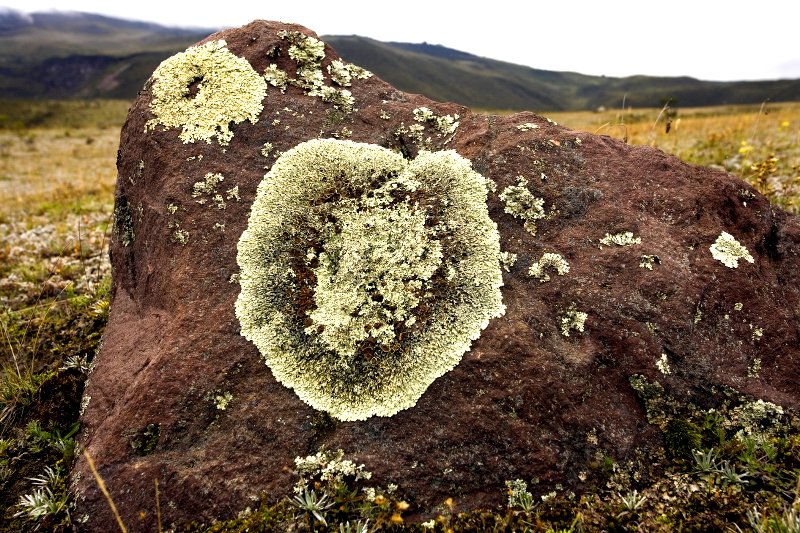
Lichens are quiet signals to the health of your farm, and you’ve probably passed them today without noticing them. Now that you think about it, are there less or more than you remember seeing as a child? How long has that abandoned building or car been sitting with lichens slowly covering its surface? Decades or more?
What Are Lichens?
Lichens are mysterious and complex organisms that consist of different kingdoms of life working together in harmony. A lichen is a partnership between two or three organisms, a fungus and green algae or cyanobacteria, often both. Mycelium, the tendrils of the fungus, dominates the partnership and forms the structure that creates the shape of the lichen. The algae or cyanobacteria do what the fungus can’t do, photosynthesize. We often take for granted that this type of partnership is what keeps humans alive. Just as we depend on the chloroplasts in the leaves of plants to convert sunshine into food, the fungal body in the lichen is also fed by its green or blue-green friend. Often, lichens grow in the same places as moss because water collects there, but they are very different and not technically part of the lichen partnership.
Lichens Provide Clues To Air Quality
Lichens vary widely by species. Some are useful for medicine, dyes and survival food; they are all long-lived and durable. However, lichens are clearly susceptible to air pollution. Lichens respire through their entire surface areas. They cannot hold their breath like mammals can or close their stomata like leafy plants can. Lichens are open to their environmental stressors all day and all night throughout all seasons. They are similar to amphibians such as frogs or salamanders that breathe through their skin. Toxins penetrate and degrade their health, and we can understand our own environment better through paying attention to lichens’ clues about air quality.
Because lichens absorb pollutants and concentrate heavy metals, scientists can extract those toxins and analyze the contents of the local atmosphere. Sulphur, nitrogen, mercury and lead top the list, especially in areas downwind from coal-fired power plants.
The long life spans of lichens make them a great subject for long-term research. Public lands across the country train citizen scientists of all ages to track and report changes in lichen populations. Similar programs in the United Kingdom have been in place for more than 100 years; where air quality has improved over the past two decades, the lichen formations have grown and rare species have made comebacks, even in London.
It’s Like Watching Lichens Grow
Lichens form a diverse range of colors and shapes and provide a distinct beauty to an otherwise barren landscape during the winter. This is the perfect time to walk around your farm and get to know your lichen community. Identifying species can be tricky. Roberta Burnes, environmental education specialist for the Kentucky Division for Air Quality, simplifies things. For the purpose of understanding their sensitivity levels, it helps to categorize the lichens you see into three major groups.

Crustose lichens are flat, nearly one-dimensional, and have the least amount of surface area for respiring, so they are the most tolerant to air pollution. As a result, crustose lichens are the most abundant.
Foliose lichens stand out in more of a two-dimensional shape and connect to the substrate at one or more points. The name foliose refers to a leafy form, which exposes more surface area and makes this type more sensitive than crustose lichens.
Fruticose lichens are the most sensitive and the rarest. They are found only in pristine areas. They are hard to miss and create living three-dimensional sculptures on the trees and rocks where they grow into extensively branching shapes.
What types of lichens do you see on your farm? An abundance of fruticose and foliose lichens indicates good air quality. If only crustose lichens are present, you might want to find out which way the wind blows and follow it to a potential pollution source.
Indicating air quality is a small yet important part of the lichen story, and there’s much more to be discovered about these overlooked organisms. They are slow, steady players in the reforestation process, as youth in the Smoky Mountains explain with this entertaining music video. Like planting a tree and watching it grow over a lifetime, if you start now and teach younger generations to observe these fascinating life forms, you might see some interesting changes in the years to come.




